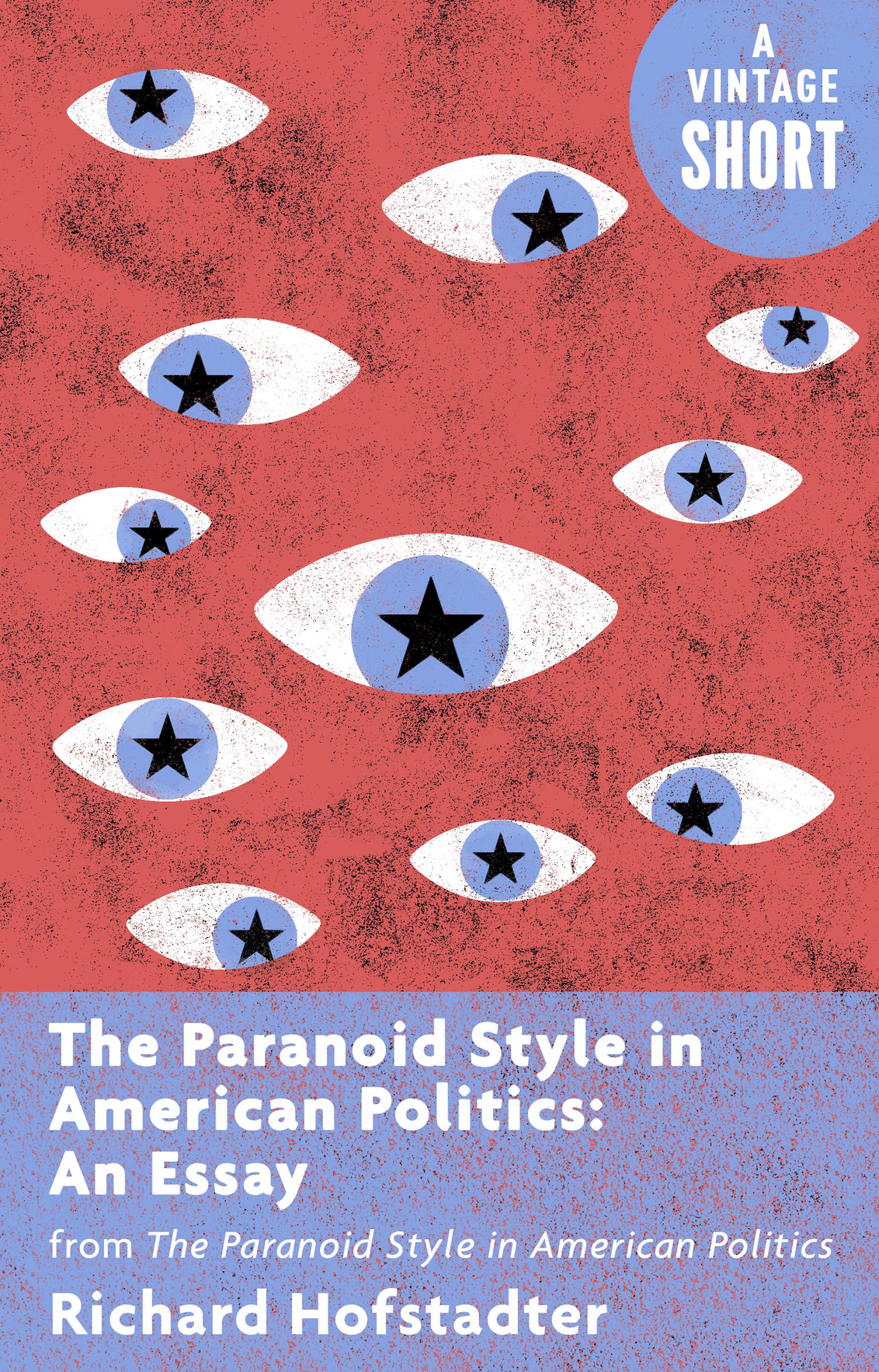All rights reserved. Published in the United States by Vintage Books, a division of Penguin Random House LLC, New York, and in Canada by Random House of Canada, a division of Penguin Random House Canada Limited, Toronto. Originally published in hardcover in slightly different form as a part of The Paranoid Style in American Politics in the United States by Alfred A. Knopf, Inc., New York, in 1965.
Vintage and colophon are registered trademarks of Penguin Random House LLC.
This essay is a revised and expanded version of the Herbert Spencer Lecture, delivered at Oxford in November 1963. An abridged text appeared in Harpers Magazine, November 1964.
I
A LTHOUGH American political life has rarely been touched by the most acute varieties of class conflict, it has served again and again as an arena for uncommonly angry minds. Today this fact is most evident on the extreme right wing, which has shown, particularly in the Goldwater movement, how much political leverage can be got out of the animosities and passions of a small minority. Behind such movements there is a style of mind, not always right-wing in its affiliations, that has a long and varied history. I call it the paranoid style simply because no other word adequately evokes the qualities of heated exaggeration, suspiciousness, and conspiratorial fantasy that I have in mind. In using the expression paranoid style, I am not speaking in a clinical sense, but borrowing a clinical term for other purposes. I have neither the competence nor the desire to classify any figures of the past or present as certifiable lunatics. In fact, the idea of the paranoid style would have little contemporary relevance or historical value if it were applied only to people with profoundly disturbed minds. It is the use of paranoid modes of expression by more or less normal people that makes the phenomenon significant.
When I speak of the paranoid style, I use the term much as a historian of art might speak of the baroque or the mannerist style. It is, above all, a way of seeing the world and of expressing oneself. Webster defines paranoia, the clinical entity, as a chronic mental disorder characterized by systematized delusions of persecution and of ones own greatness. In the paranoid style, as I conceive it, the feeling of persecution is central, and it is indeed systematized in grandiose theories of conspiracy. But there is a vital difference between the paranoid spokesman in politics and the clinical paranoiac: although they both tend to be overheated, oversuspicious, overaggressive, grandiose, and apocalyptic in expression, the clinical paranoid sees the hostile and conspiratorial world in which he feels himself to be living as directed specifically against him; whereas the spokesman of the paranoid style finds it directed against a nation, a culture, a way of life whose fate affects not himself alone but millions of others. Insofar as he does not usually see himself singled out as the individual victim of a personal conspiracy, he is somewhat more rational and much more disinterested. His sense that his political passions are unselfish and patriotic, in fact, goes far to intensify his feeling of righteousness and his moral indignation.
Of course, the term paranoid style is pejorative, and it is meant to be; the paranoid style has a greater affinity for bad causes than good. But nothing entirely prevents a sound program or a sound issue from being advocated in the paranoid style, and it is admittedly impossible to settle the merits of an argument because we think we hear in its presentation the characteristic paranoid accents. Style has to do with the way in which ideas are believed and advocated rather than with the truth or falsity of their content.
A few simple and relatively non-controversial examples may make this distinction wholly clear. Shortly after the assassination of President Kennedy, a great deal of publicity was given to a bill, sponsored chiefly by Senator Thomas E. Dodd of Connecticut, to tighten federal controls over the sale of firearms through the mail. When hearings were being held on the measure, three men drove 2,500 miles to Washington from Bagdad, Arizona, to testify against it. Now there are arguments against the Dodd bill which, however unpersuasive one may find them, have the color of conventional political reasoning. But one of the Arizonans opposed it with what might be considered representative paranoid arguments, insisting that it was a further attempt by a subversive power to make us part of one world socialistic government and that it threatened to create chaos that would help our enemies to seize power.
Again, it is common knowledge that the movement against the fluoridation of municipal water supplies has been catnip for cranks of all kinds, especially for those who have obsessive fear of poisoning. It is conceivable that at some time scientists may turn up conclusive evidence that this practice is, on balance, harmful; and such a discovery would prove the antifluoridationists quite right on the substance of their position. But it could hardly, at the same time, validate the contentions of those among them who, in characteristic paranoid fashion, have charged that fluoridation was an attempt to advance socialism under the guise of public health or to rot out the brains of the community by introducing chemicals in the water supply in order to make people more vulnerable to socialist or communist schemes.









